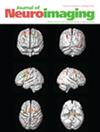A Novel Convolutional Neural Network for Automated Multiple Sclerosis Brain Lesion Segmentation
Abstract
Background and Purpose
Assessment of brain lesions on magnetic resonance imaging (MRI) is crucial for research in multiple sclerosis (MS). Manual segmentation is time-consuming and inconsistent. We aimed to develop an automated MS lesion segmentation algorithm for T2-weighted fluid-attenuated inversion recovery (FLAIR) MRI.
Methods
We developed FLAIR Lesion Analysis in Multiple Sclerosis (FLAMeS), a deep learning-based MS lesion segmentation algorithm based on the nnU-Net 3D full-resolution U-Net and trained on 668 FLAIR 1.5 and 3 tesla scans from persons with MS. FLAMeS was evaluated on three external datasets: MSSEG-2 (n = 14), MSLesSeg (n = 51), and a clinical cohort (n = 10), and compared to SAMSEG, LST-LPA, and LST-AI. Performance was assessed qualitatively by two blinded experts and quantitatively by comparing automated and ground truth lesion masks using standard segmentation metrics.
Results
In a blinded qualitative review of 20 scans, both raters selected FLAMeS as the most accurate segmentation in 15 cases, with one rater favoring FLAMeS in two additional cases. Across all testing datasets, FLAMeS achieved a mean Dice score of 0.74, a true positive rate of 0.84, and an F1 score of 0.78, consistently outperforming the benchmark methods. For other metrics, including positive predictive value, relative volume difference, and false positive rate, FLAMeS performed similarly to or better than benchmark methods. Most lesions missed by FLAMeS were smaller than 10 mm3, whereas the benchmark methods missed larger lesions in addition to smaller ones.
Conclusions
FLAMeS is an accurate, robust method for MS lesion segmentation that outperforms other publicly available methods.


 求助内容:
求助内容: 应助结果提醒方式:
应助结果提醒方式:


